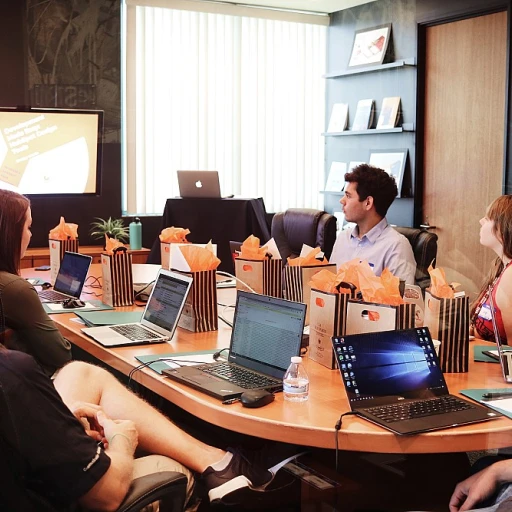
The Early Days of Applicant Tracking Systems
Foundations of Recruitment Systems
The journey of applicant tracking systems (ATS) began in the early days of recruitment when paper resumes and manual processes ruled the hiring landscape. This initial phase of recruitment saw HR departments overwhelmed by the sheer volume of applications, making it difficult to sift through countless resumes to identify qualified candidates. ATS emerged as a solution, providing recruiters with a centralized platform for resume parsing and candidate tracking, transforming the labor-intensive task of managing a recruitment process into a streamlined procedure.
Evolving with Technological Progress
In their nascent stages, ATS platforms operated with basic functionalities, focusing primarily on the storage and retrieval of applicant data. These systems gradually evolved into sophisticated recruitment management tools, integrating features like job boards and social media connectivity to enhance the talent acquisition process. This evolution marked a significant shift in how recruiters interacted with potential job seekers, providing them with efficient ways to post jobs and track candidates throughout the hiring process.
Furthermore, ATS software laid the groundwork for future enhancements, setting the stage for modern ATS solutions that now leverage artificial intelligence to redefine candidate sourcing strategies. From an increased focus on data analytics to improving the candidate experience, these systems have laid down a robust foundation for the more advanced iterations we see today.
For more insights into how recruitment processes have transformed over the years, visit our blog on employee assessment tools.
Technological Advancements in ATS
Evolution of Technology in Applicant Tracking Systems
Over the years, applicant tracking systems (ATS) have undergone significant technological advancements. Initially developed as basic tools for organizing resumes and automating a portion of the recruitment process, they have now evolved into comprehensive ATS platforms designed to enhance candidate experience and improve talent acquisition strategies.
Modern ATS software incorporates various tools and functionalities that were unimaginable in its early days. One of the most notable advancements is the integration of social media channels. This allows recruiters to broaden their search for qualified candidates, effectively reaching top talent across platforms where potential job seekers are active. Such integration not only expands the reach but also aligns with the habits and preferences of the modern candidate.
Another significant development is the refinement in resume parsing capabilities. Older systems often struggled with accurately processing varied resume formats. The new-gen ATS systems utilize sophisticated algorithms that ensure reliable extraction of applicant data. This enhanced capability is instrumental in aiding the speedy identification of ideal matches for the job requisition.
Not to be overlooked, current ATS solutions emphasize data management and tracking systems. By storing and analyzing vast pools of candidate information, these systems allow for more informed decisions in the hiring process. The integration of powerful tracking and analytic tools means that recruitment data can be leveraged to optimize processes, thus increasing the efficiency of hiring.
As technology progresses, so do the capabilities of ATS platforms. Cutting-edge features pilot tracking and recruitment into an era where artificial intelligence and machine learning are routine. This ongoing transformation promises to streamline recruitment processes further and refine how recruiters engage with potential candidates. See how Ceipal's integration with ADP exemplifies these advancements in enhancing candidate sourcing.
Impact on Candidate Sourcing Strategies
The Evolution of Candidate Sourcing in ATS
The evolution of applicant tracking systems (ATS) has significantly transformed the way organizations approach candidate sourcing strategies. In the early days of ATS, recruiters primarily relied on job boards and manual resume parsing to identify potential candidates. This time-consuming process has been revolutionized by advanced ATS platforms that streamline recruitment processes, making it easier to attract and engage top talent.
Today's recruitment landscape demands effective management of vast volumes of data, and modern ATS solutions are equipped with sophisticated tools that not only automate the tracking process but also enhance the overall candidate experience. Thanks to technological advancements, such systems provide powerful search and filtering capabilities that enable recruiters to swiftly identify qualified candidates from extensive talent pools.
Another significant change is the integration of social media into candidate sourcing strategies. ATS software platforms now include features that allow recruiters to tap into the dynamic world of social networks to find and engage job seekers. This integration enriches the recruitment process by allowing access to a broader range of passive and active candidates, thereby expanding the horizon for discovering qualified talent.
Furthermore, modern ATS platforms leverage the potential of artificial intelligence and data analytics to further enhance sourcing strategies. AI algorithms can analyze vast amounts of applicant data to identify patterns and predict candidate success, enabling recruiters to make more informed hiring decisions. This innovation not only improves the efficiency of the tracking system but also optimizes the hiring process by focusing on the most qualified candidates.
To delve deeper into how AI is revolutionizing recruitment, check out this comprehensive guide on AI-powered job hiring tools.
The Role of Artificial Intelligence in Modern ATS
Artificial Intelligence: A Game Changer for ATS
The recruitment landscape has witnessed remarkable evolution with the integration of Artificial Intelligence (AI) into Applicant Tracking Systems (ATS). As businesses strive to attract top talent, AI offers transformative capabilities that enhance every facet of the recruitment process. One of the standout features of AI in ATS software is its ability to streamline the resume parsing process. By leveraging machine learning algorithms, ATS platforms can sift through vast volumes of resumes to identify qualified candidates more efficiently. This not only saves recruiters substantial time but also increases the likelihood of finding candidates who align perfectly with job requirements. AI-driven systems provide heightened candidate experience by offering personalized recommendations and more interactive communication. For instance, chatbots integrated into modern ATS solutions engage with candidates, responding to inquiries in real-time and ensuring they are well-informed throughout the hiring process. Additionally, AI enhances the predictive analytics capabilities of tracking systems. By analyzing data trends and patterns, these systems offer actionable insights that assist recruiters in making informed hiring decisions. This data-driven approach allows recruitment teams to refine strategies and prioritize candidates who are likely to make a significant impact on their organizations. Another advantage is the integration of AI with social media and job boards, casting a wider net in the talent acquisition process. Propelled by AI algorithms, ATS management platforms can automatically post job ads, track candidate engagement, and optimize postings dynamically to achieve maximum reach. Despite the manifold benefits, there exist challenges and limitations with the current AI-powered systems. These include concerns about bias in algorithms and the need for constant monitoring to ensure fair practices. As these systems continue to mature, ongoing advancements in AI are expected to address these barriers, further refining the efficiency and fairness in candidate sourcing.Challenges and Limitations of Current ATS
Overcoming the Hurdles of Modern ATS
Despite the significant advancements in applicant tracking systems (ATS) over the years, these platforms still face several challenges and limitations that impact the recruitment process. While ATS software has streamlined many aspects of hiring, it is not without its flaws. Understanding these limitations is crucial for recruiters and hiring managers aiming to optimize their candidate sourcing strategies.
Complexity and Usability Issues
One of the primary challenges with modern ATS platforms is their complexity. Many systems are packed with features that, while powerful, can be overwhelming for users. Recruiters often find themselves spending more time learning the system than actually using it to track candidates. This complexity can lead to a poor user experience, ultimately affecting the efficiency of the recruitment process.
Resume Parsing Limitations
Resume parsing is a critical function of ATS systems, yet it remains a significant pain point. Despite technological advancements, many ATS solutions struggle with accurately parsing resumes, especially those with unconventional formats or layouts. This can result in qualified candidates being overlooked simply because their resumes do not fit the standard mold that the system can easily process.
Data Management and Integration Challenges
Data management is another area where ATS platforms often fall short. Integrating data from various sources, such as job boards and social media, can be cumbersome. Additionally, ensuring data accuracy and consistency across different systems is a continuous challenge. These issues can hinder the ability of recruiters to maintain a comprehensive view of the talent pool.
Impact on Candidate Experience
The candidate experience is a critical aspect of the recruitment process, and ATS systems can sometimes negatively impact this. Candidates often report frustration with the application process, citing issues such as lengthy forms and lack of communication. This can deter top talent from completing their applications, ultimately affecting the quality of the candidate pool.
Balancing Automation with Human Touch
While automation in ATS systems has brought efficiency to the recruitment process, it can also lead to a lack of personalization. Candidates may feel like they are interacting with a machine rather than a human, which can diminish their overall experience. Striking the right balance between automation and the human touch is essential for maintaining a positive candidate experience.
In conclusion, while modern ATS platforms have transformed the recruitment landscape, they are not without their challenges. Addressing these limitations is crucial for organizations looking to attract and retain top talent in an increasingly competitive job market.










